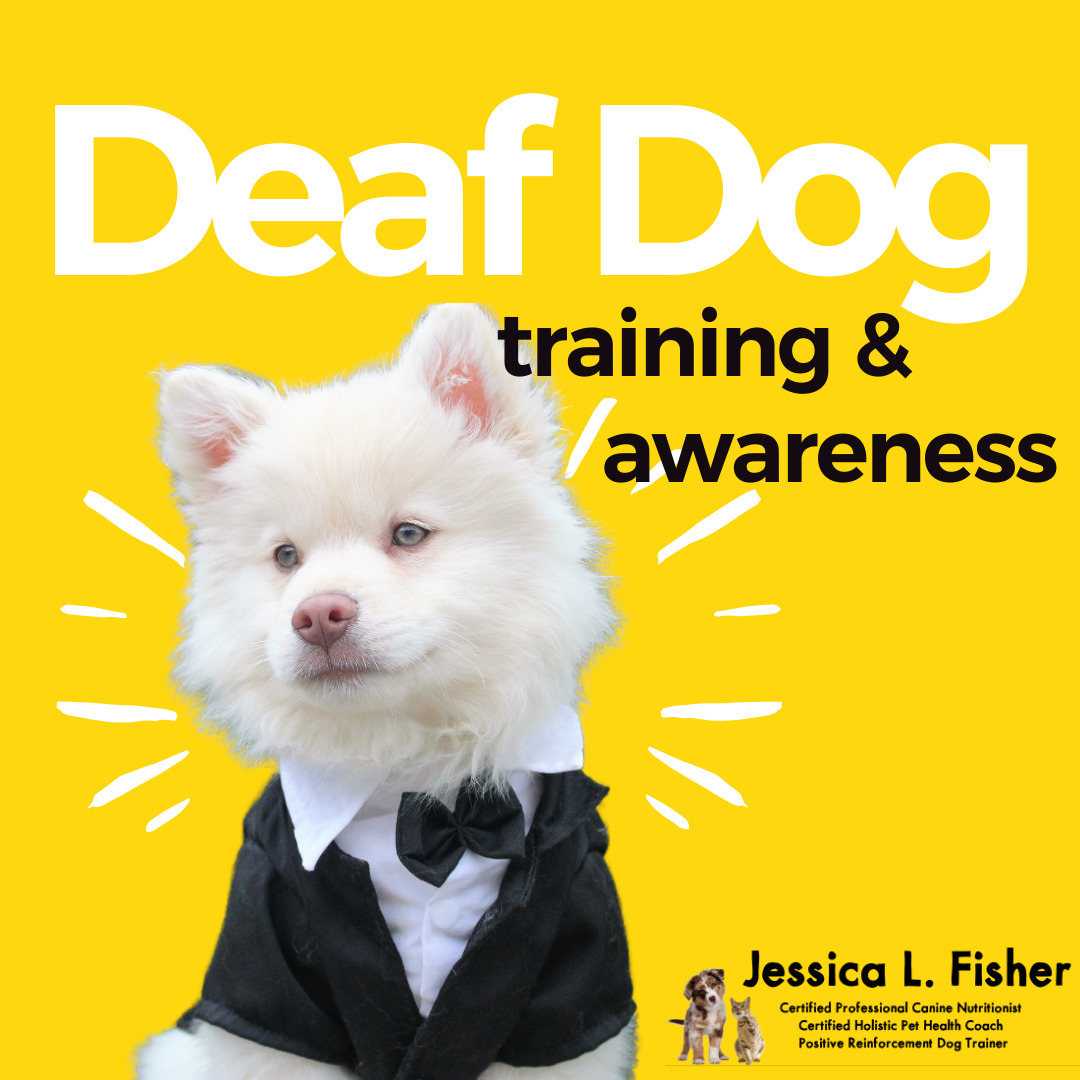Updated September 2023
I’ve been hesitant to post anything about DCM (Canine Dilated Cardiomyopathy) for years now because the truth is that we don’t know all that much, but more information has been coming out lately and I feel that it’s finally time to address the elephant in the room.
I’ve spoken with almost every single in-home training client of mine for the past couple of years, and now with my pet health coaching clients, about DCM. Not because I bring it up but because they do. People are still scared because there just isn’t much information out there any longer, but the “threat” never really went away . . . and certainly wasn’t properly explained to the mass of pet-loving people in the world. Most people say they know that they need to feed kibble (dry food) with grains to avoid heart problems with their dogs.
It’s precisely this “cure” that has me so frustrated so I’ve taken some time to go through some of the latest information to hopefully break this down for you. As a reminder, I am not a veterinarian or a canine nutritionist, but a pet mom on a mission to help as many pets as possible.
Canine Dilated Cardiomyopathy
According to Cornell University, “Canine dilated cardiomyopathy (DCM) is a primary disease of cardiac muscle that results in a decreased ability of the heart to generate pressure to pump blood through the vascular system. The definitive cause of canine DCM is the subject of debate, although a number of factors including nutritional, infectious, and genetic predisposition have been implicated. The fact that canine DCM occurs at a higher incidence in specific breeds suggests a heritable genetic component to this disease, although it is likely that its etiology is multifactorial. Breeds predisposed to DCM include the Doberman Pinscher, the Great Dane, the Boxer, and the Cocker Spaniel. Dietary carnitine deficiency may play a role in some cases of Boxer DCM, and taurine responsive DCM has been identified in Cocker Spaniels.”
Clinical signs of DCM in dogs, as summarized by the Canine Health Nut “Probably the hardest part about the diagnosis of Dilated Cardiomyopathy in dogs is that the clinical signs are largely silent unless you are doing very specific heart-related testing. DCM is commonly called Sudden
Death Syndrome because of its silent nature. Meaning sometimes dogs will act completely normal until they pass out, and go through cardiac arrest.
But sometimes dogs will express clinical signs of the disease. These dogs will usually show:
- Shortness of Breath / Excessive Panting
- Coughing or a Wet Cough
- Exercise Intolerance, or Tiring more Easily
- Fainting
- Eating Less or Difficulty Eating (due to problems breathing)
- Fluid build-up in the abdomen (which can present as sudden weight gain)
- Rapid Breathing while Sleeping (more than 40 breaths per minute when sleeping)
- Lethargy”
To summarize, DCM restricts the ability of the heart to pump blood, though the initial clinical signs, if any, will have more to do with decreased blood oxygen such as coughing, lethargy, weakness, and/or respiratory distress.
There are two types of DCM, primary and secondary. Primary DCM is a progressive disease that is not reversible with diet or supplementation but can be managed with medication and heart supplementation. Secondary DCM, if caught early enough, can be reversed through supplementation and medication. Secondary DCM is thought is be caused by taurine/carnitine deficiency, infection, parasites, or certain antibiotics (adriamycin).
Diagnosing DCM can be tricky since there may not be clinical signs and/or clinical signs could look like something else, especially if the dog is not a breed prone to DCM. “The only way to diagnose DCM is to do an Echocardiogram, which looks at the fluid volume, stroke volume, and movement of blood within the heart, along with the overall shape of the heart chambers. Though some veterinarians may measure whole blood and plasma taurine, or carnitine to check for nutritional deficiencies – these are not accurate screening tests for DCM, as not all dogs with
DCM will have these deficiencies” says Nikki Govanelli.
What Happened?
The FDA first alerted the public that they were investigating a connection between an increased reporting of DCM in dogs (and a few cats) and grain-free foods in 2018. There was a lot of confusion in the beginning about what was causing the increased numbers of cases of DCM in dogs, including a short period of time where the blame fell on “boutique” pet foods and then ultimately on grain-free foods. One thing hasn’t changed in the last 4 years and that’s the confusion surrounding the issue.
In the initial report, there were two groups of dogs identified. The first group of dogs known to have a genetic predisposition to DCM, Great Danes, Dobermans, Goldens, and Labradores, all on grain-free diets also had low blood taurine levels. The second group of dogs was not known to have any predisposition, Shi-Tzus, Chihuahuas, and Whippets, all on grain-free diets but did not have low blood taurine levels.
While the investigation has been ongoing for over 4 years now, we still do not know exactly what is happening and why there has been such an increase in DCM cases. What we do know is that 90% of the reported cases come from dogs being fed grain-free diets, which is a pretty strong correlation. These grain-free diets are high in peas, lentils, legumes, and potatoes.
The Most Likely Culprit
While it is true that there is no definitive answer as to why so many more dogs have suffered DCM on grain-free diets over the past few years, a 2019 study may be on to something.
In this study, the nutrient profiles of the completed foods were assessed to discern nutrient compatibility, nutrient digestibility, and bioavailability, three factors that pet food manufacturers do not test for and have no regulation for testing.
This study, titled “Special topic: The association between pulse ingredients and canine dilated cardiomyopathy: addressing the knowledge gaps before establishing causation” suggests that interactions among food constituents can increase the risk of DCM development. One amino acid, in particular, taurine, which we mentioned earlier, is often a culprit in diet-induced DCM, though dogs and cats being supplemented with taurine are still being diagnosed with DCM, according to Dr. Judy Morgan. Here is an excerpt from an email she sent on January 14, 2022 (links included are from her original email):
No one knows for sure why some breeds are having difficulty or whether the problem is low taurine, low taurine absorption, interference with taurine production, or an ingredient in the food that is toxic to the heart. The usual breeds such as Dobermans, Boxers, and Great Danes will continue to top the list for dilated cardiomyopathy problems, but why are we seeing it in small breeds and breeds that have not been genetically prone to DCM? And why are they not seeing this problem in Europe?
Board-certified nutritionists are recommending that pet owners continue to trust the large pet food manufacturers with years of experience producing high-quality food. (Including those that have been found to have pentobarbital in their food.) Those big companies are making just as much grain-free food as the smaller “boutique” companies. Since grains do not contain taurine, feeding grain is not the solution to the problem. Many of those large manufacturers were incriminated in one report.
Many of the dogs tested for taurine were found to have adequate blood taurine levels, even though they had full-blown DCM. So supplementing taurine may not be the solution to the problem.
While cardiologists are seeing this disease more often in dogs, they are not claiming the same issues for cats. However, I saw a four-year-old cat with dilated cardiomyopathy. The cat was eating grain-free food. Cat food has been supplemented with taurine for years, as it is an essential amino acid for cats. Is there a connection here?
At this point in time, there are more questions than answers. I have never recommended feeding high-starch diets to dogs or cats. Peas, chickpeas, lentils, potatoes, and other high starch ingredients may or may not be the problem associated with the increase in DCM. I just don’t think they are a good addition to the diets of our pets for many reasons: obesity, insulin resistance, diabetes, and other inflammatory conditions are seen more often in pets eating large amounts of these ingredients.
While the cardiologists at Tufts recommend against feeding raw or home-prepared diets, I can only attest to the benefits I have seen in my own dogs by feeding these diets. All my cavaliers have developed mitral valve disease (a different disease from dilated cardiomyopathy, but heart disease nonetheless). They have eaten raw and home-prepared diets for years. The average life expectancy for a cavalier once placed on heart medications is under three years. We have far surpassed that in all our dogs. Coincidence? I think not.
What We Know
We know that dogs who have been diagnosed with DCM related to grain-free diets who have switched their food off to a grain-free diet containing the “suspected ingredients” (lentils, peas, chickpeas, legumes, and potatoes) have longer survival times than those dogs who do not switch their diets, according to this PubMed article.
Another 2021 study that looked at 4 dog breeds with genetic predispositions to DCM showed that even with grain-included diets, those diets that also contained lentils, peas, and legumes resulted in higher instances of cardiac changes.
It seems that diets including peas, chickpeas, lentils, legumes, and potatoes are creating incompatibilities within nutrient profiles that are leading to increased instances of heart disorders. This is not an issue of grain-filled or grain-free diets, but ingredient profiles within the diets regardless of the status of grains.
When we choose to feed a species-appropriate diet that is high in meats and organs and either balanced every meal or balanced over time (balanced based on AAFCO or NRC guidelines), we can avoid fillers such as lentils and legumes, foods that would likely never find their way into a dog naturally anyway.
If you are choosing to feed kibble (dry feed), choose a product with as much meat as possible and ideally one without peas or legumes. Feed as many fresh foods as possible when the primary diet is dry and make sure your pet is receiving plenty of moisture in their diet as well.
The FDA formally closed its investigation into diet-related DCM claims on December 23, 2022.
New Information In Question
Could feeding an amount other than what is listed on the dog food bag be the reason, or a contributing factor, for the rise in secondary DCM in dogs?
Susan Thixton thinks that it’s at least worth exploring. In her blog post titled “What if … AAFCO Nutrient Profiles Are Linked To DCM?” she explains that there are already multiple studies showing that dogs fed less than what is instructed on the bag are at risk for multiple nutrient deficiencies.
AAFCO feeding guidelines are based on active dogs, and most pet dogs in the United States are not active. This leads veterinarians to recommend feeding less food because their patients are overweight. While calories in/ calories out is a method for weight loss, we also have to consider where those calories are coming from! A much better weight loss program would be calorie restriction with more protein, but this isn’t happening with dogs being fed kibble diets. Kibble is inherently chalked full of starchy carbohydrates.
Susan Thixton, Dr. Karen Becker, and Steve Brown think this deserves the FDA’s attention and a full investigation. The reality is that if this is the case, if feeding less than recommended is leading to nutrient deficiencies which then leads to DCM in dogs, then diet reformulation is necessary for inactive dogs. This is much easier to do with raw and home-cooked diets because when feeding less food, we are still feeding a full array of bioavailable nutrients from whole foods. That doesn’t create a healthy bottom line for the big pet food companies.




